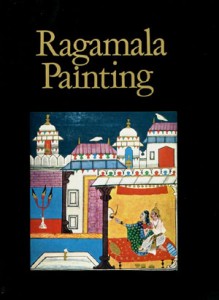Ajay Parasuraman
 As we’ve covered the basics of both Carnatic and Hindustani to an extent, it is time that we delved a little deeper into each of the individual entities associated with Classical Music; Raag, Taal etc. This post will entirely be about Raags. So, to those who are interested, read on!
As we’ve covered the basics of both Carnatic and Hindustani to an extent, it is time that we delved a little deeper into each of the individual entities associated with Classical Music; Raag, Taal etc. This post will entirely be about Raags. So, to those who are interested, read on!
Sept 5th happens to be the birthday of one of my favorite singers of all time, that of Madurai T.N Seshagopalan. I, on behalf of Music Aloud, wish him a Happy Birthday! May he continue to awe more and more aficionados with his serene voice and incomparable brigas!
That done, let’s get on with elaborating on the protagonist of this post.
The word ‘Raga’ comes from the Sanksrit word for ‘to color/dye’. The word has since retained it’s original purpose and meaning — to ‘beautify’, in a sense. As I had mentioned in one of the earlier posts, Indian Classical Music has 7 swaras or Sapta-swaras. In fact, these sapta swaras are furthered split-up into sub-categories. In both the systems, the Sa and the Pa are fixed. That is, they don’t have sub-categories, and are fixed for a particular pitch.
The other swaras, however, are divided. Let’s call the divisions as ‘versions’ of each swara. In the Carnatic system, each of the swaras, excepting Sa, Pa and Ma, have 3 versions. ‘Ma’ has 2 ‘versions’. In the Hindustani system, in a given seven-tone mode, the second, third, sixth, and seventh notes can be natural (shuddha) or flat (komal, ‘soft’) but never sharp, and the fourth note can be natural or sharp (tivra) but never flat. The following table gives the different divisions in Carnatic and their equivalents in Hindustani:
| Carnatic | Hindustani | Western E.T. | |
|---|---|---|---|
| Sa | Sa | “C” | |
| Shuddha Ri | “R1” | Komal Re | “D♓ |
| Chatusruti Ri | “R2” | Shuddha Re | “D” |
| Shatsruti Ri | “R3” | (Komal Ga) | “D♯“ |
| Shuddha Ga | “G1” | (Shuddha Re) | “D” |
| Sadharana Ga | “G2” | Komal Ga | “E♓ |
| Antara Ga | “G3” | Shuddha Ga | “E” |
| Shuddha Ma | “M1” | Shuddha Ma | “F” |
| Prati Ma | “M2” | Teevra Ma | “F♯“ |
| Pa | Pa | “G” | |
| Shuddha Dha | “D1” | Komal Dha | “A♓ |
| Chatusruti Dha | “D2” | Shuddha Dha | “A” |
| Shatsruti Dha | “D3” | (Komal Ni) | “A♯“ |
| Shuddha Ni | “N1” | (Shuddha Dha) | “A” |
| Kaisika Ni | “N2” | Komal Ni | “B♓ |
| Kakali Ni | “N3” | Shuddha Ni | “B” |
A Raaga is a combination of some of these and are ‘fixed’ for a Raaga and don’t change during the duration of a song/kriti. Ragas that have five swaras are called audava ragas; those with six, shaadava ; and with seven, sampurna . Those ragas that do not follow the strict ascending or descending order of swaras are called vakra ragas.
Every raga is capable of stirring an emotion. In olden times, each raga would have a prescribed time of day to be sung in, thus accentuating it’s purpose of affecting the emotions of it’s listeners. During the monsoon, for example, many of the Malhar (Megh Malhar etc) group of ragas, which are associated with the monsoon and ascribed the magical power to bring rain, are performed. Amrita Varshini in Carnatic provides the same ‘output’, so to speak. However, South Indian ragas don’t generally come with a specified time of the day. Hence, all ragas are sung during Concerts.
As the Great Nedunuri Krishnamurthy sir said once during one of his lecture demonstrations: “every raga is a raga devatha (goddess)”. Singing in a particular raga would then mean that the singer would be invoking the goddess associated with that raga. In this regard, I’d like to mention a work of literature that was the first to mention this associated of a raga and it’s ‘goddess’ : The Sangeeta Ratnakara , which is entirely composed in Sanskrit. This text was later made into a series of paintings called the ‘Ragamala’ paintings, lit. Garland of Ragas. The Ragamala paintings flourished well, far and wide under royal patronage, but, now, have faded over the last century or two.
The Ragamala paintings also happen to be a form classification of ragas. The raga-ragini scheme was a classification scheme used from the 14th century to the 19th century. It usually consists of 6 ‘male’ ragas each with 6 ‘wives’ (raginis) and a number of sons (putras) and even ‘daughters-in-laws’! As it did not agree with various other schemes, and the ‘related’ or ‘allied’ ragas (ragas with similar notes or swaras) had very little or no similarity, the raga-ragini scheme is no longer very popular.
In 1570, Kshemakarna, a priest of Rewa in Central India, compiled a poetic text on the Ragamala in Sanskrit, which describes six principal Ragas– Bhairava, Malakoshika, Hindola, Dipaka, Shri, and Megha–each having five Raginis and eight Ragaputras, except Raga Shri, which has six Raginis and nine Ragaputras, thus making a Ragamala family of 86 members.
Six are male (parent) ragas; the thirty raginis are their wives and the remaining forty-eight are their sons. These are listed as:
- (1) Parent Raga: Bhairav raga
Wives: Bhairavi, Bilawali, Punyaki, Bangli, Aslekhi. Sons: Pancham, Harakh, Disakh, Bangal, Madhu, Madhava, Lalit, Bilaval.
- (2) Parent Raga: Malkaus raga
Wives: Gaundkari, Devagandhari, Gandhari, Seehute, Dhanasri. Sons: Maru, Mustang, Mewara, Parbal, Chand, Khokhat, Bhora, Nad.
- (3) Parent Raga: Hindol raga
Wives: Telangi, Devkari, Basanti, Sindhoori, Aheeri. Sons: Surmanand, Bhasker, Chandra-Bimb, Mangalan, Ban, Binoda, Basant, Kamoda.
- (4) Parent Raga: Deepak raga
Wives: Kachheli, Patmanjari, Todi, Kamodi, Gujri. Sons: Kaalanka, Kuntal, Rama, Kamal, Kusum, Champak, Gaura, Kanra [36].
- (5) Parent Raga: Sri raga
Wives: Bairavi, Karnati, Gauri, Asavari, Sindhavi. Sons: Salu, Sarag, Sagra, Gaund, Gambhir, Gund, Kumbh, Hamir.
- (6) Parent Raga: Megh raga
Wives: Sorath, Gaundi-Malari, Asa, Gunguni, Sooho. Sons: Biradhar, Gajdhar, Kedara, Jablidhar, Nut, Jaldhara, Sankar, Syama.
For those interested in learning about the Ragamala paintings in detail, kindly go here.
I guess that’s it for this post. Hope it wasn’t too much to take in. Do voice in with your comments. And, not to forget, suggestions! I leave you with a birthday tribute to T N Seshagopalan, one of his effortless renditions of Begada Raga.



